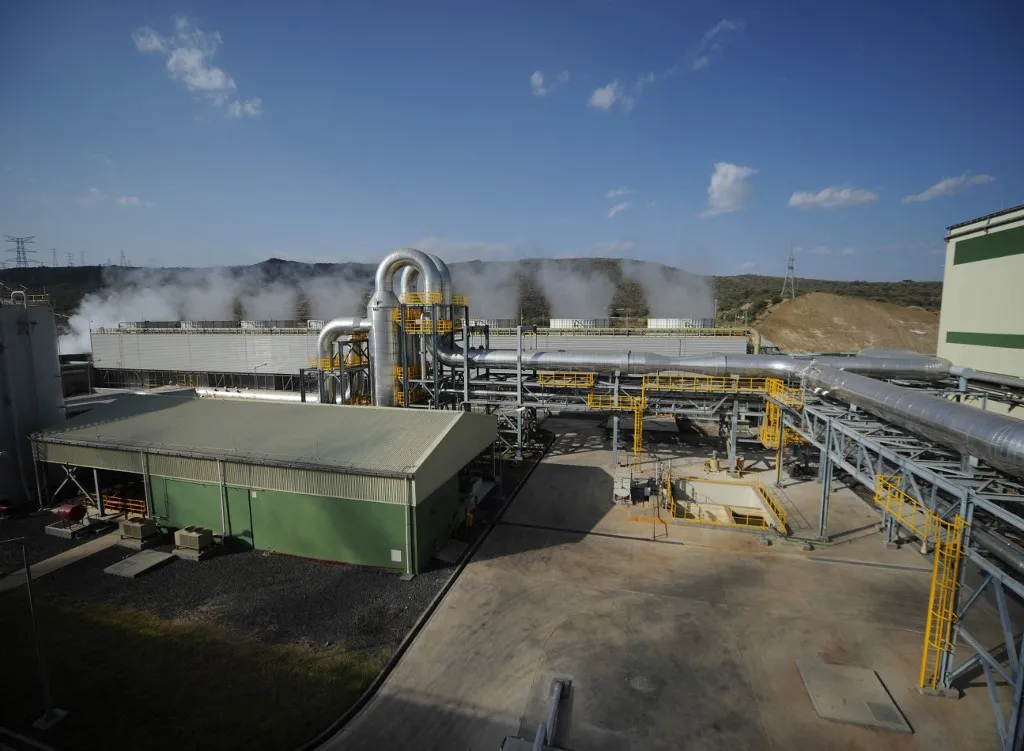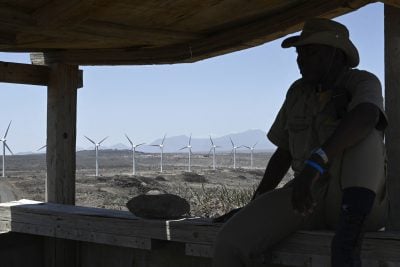Africa’s geothermal capacity is set to more than double in the next seven years, allowing the continent’s geothermal industry to overtake Europe’s, according to research published by consulting firm Rystad Energy. The firm expects geothermal power capacity to reach 13 GW in Africa by 2050, up from only around 1 GW today.
Generating electricity from geothermal resources involves harnessing superheated pools of water and steam created by magma flowing deep below the Earth’s surface. Where geological conditions allow – typically in volcanic regions, or along tectonic plate boundaries – these geothermal resources can be piped to the surface and converted to electricity. The heat produced by geothermal resources can also be used for various purposes.
The Rift Valley region of East Africa has by far the most favourable conditions for geothermal energy generation on the continent. Kenya has led the way in harnessing this potential – rapid development over the past decade has helped the country become the world’s seventh-largest geothermal producer.
Rystad figures show that the country is now producing 6.5 terrawatt hours (TWh) of electricity from geothermal sources (nearly half its total supply), up from just 1.6 TWh in 2010. The world’s largest geothermal facility, Olkaria VI, is set to begin production in Kenya’s Hell’s Gate National Park as early as next year.
Daniel Holmedal, senior supply chain analyst at Rystad Energy, told African Business that the rise of Kenya’s geothermal industry is partly down to drilling campaigns undertaken by state-owned entities as far back as the 1960s. These had the effect of “de-risking” investment by geothermal developers, which eventually launched projects after resources had been proven.
Reflecting the rapid momentum, Kenyan power company KenGen – which operates multiple geothermal power stations in the country – has announced a 48% increase in pre-tax profits in the year to 30 June. The company, which is 70% owned by the Kenyan government, said that additional geothermal units allowed it to continue interrupted electricity supplies, even as hydropower facilities were affected by drought conditions.
Kenya’s neighbours play catch-up
The ability of geothermal sources to provide a “baseload” supply of both low-carbon power and heat means that Kenya is well positioned to attract a range of green industries. For example, several developers of “direct air capture” technology, which removes carbon dioxide from the atmosphere are looking at Kenya as a potential base, largely due to its plentiful supply of power and heat from geothermal sources.
Rystad lists Ethiopia, Djibouti, Tanzania and Zambia as the other key countries for geothermal energy in Africa. These countries, however, have been much slower in developing their geothermal resources than Kenya.
Ethiopia, despite possessing comparable geothermal potential to Kenya, has lagged behind its East African neighbour up until now. “Power supply in Ethiopia has primarily been met by hydropower so far, so it has not been as important to harness its geothermal resources compared to a country like Kenya,” says Holmedal.
As reported by African Business in April, companies attempting to develop geothermal projects in Ethiopia have encountered a barrage of problems, including Covid-19, political instability and the impact of the Tigray War. Geothermal developers also complain of a lack of support, both from the government and development finance institutions.
Still, Holmedal believes that Ethiopia can start to accelerate the development of its geothermal resources. “We expect in Ethiopia to see a more diverse power mix in the coming decades and geothermal should start playing a more important role,” he says.
Kenyan companies, including KenGen and the Geothermal Development Company, are increasingly active in helping neighbouring countries harness their geothermal resources.
Rystad’s forecasts suggest that Ethiopia will be generating 7 TWh of electricity from geothermal sources by 2030, up from just 0.4 TWh today. This will depend on the success of several projects still at the development stage, including the Tulu Moye, Aluto-Langano and Corbetti. By 2050, Rystad believes Ethiopia could be generating 24 TWh from geothermal sources, accounting for around one-fifth of its power supply.
Want to continue reading? Subscribe today.
You've read all your free articles for this month! Subscribe now to enjoy full access to our content.
Digital Monthly
£8.00 / month
Receive full unlimited access to our articles, opinions, podcasts and more.
Digital Yearly
£70.00 / year
Our best value offer - save £26 and gain access to all of our digital content for an entire year!

 Sign in with Google
Sign in with Google 



